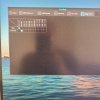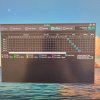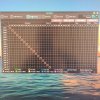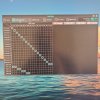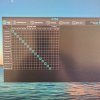It's funny, when researching this, a lot of people bring up to never do live sound through a laptop. Maybe 20 years ago I'd agree, but these days - I dunno, I never ever have an issue with any of my PCs.
Everyone finds their own way of doing things, but I'm still be in the camp of "never use a PC to mix a live gig." Horror stories are anecdotal, but I've got one:
About 5-6 years ago, I played at my friend's church. They had upgraded when wedges to IEM's. I was used to using IEM's with my cover band, so that was no problem. The problem was that my friend who was leading the band from drums did not trust the sound guys at the church. So he had all the signals going to his MacBook first so he could EQ and add effects before sending it to the board. I can't remember if he sent the channels separately to the board or if it was just a stereo mix.
Anyways, we were playing one of those slow ballad songs they play before "The Message" that's designed to emotionally engage people. This one starts off quiet, then has a long build up before everyone really comes in with a big sound. Well, we did the build up and just as we went to get into the big part, the MacBook messed everything up. All the channels had latency/delay by like a second or so. Everything was direct (guitar, bass, drums, keys), so there was no way to take out your ears and hear correctly.
It resulted in all of us playing very apart from each other. I'd strum a chord and then hear it a second later. All of us on stage were looking at each other like, "what do we do?" until we just stopped playing. It really sound like when you fail a song on Guitar Hero or Rock Band. We then just stood there in silence in front of about 400 people. After about 5 seconds, some old lady started clapping. Everyone joined in. We just walked off the stage in embarrassment. We quickly found humor in the situation. I wish I had access to the video they took of the service. It was hilarious watching it back.
Of course any piece of gear has a chance to fail. I think a PC/Mac has a higher chance of failing in a live system. You're running a full OS with all sorts of stuff running in the background just to have a single software program do something that mixers are designed solely to do. I get there's a learning curve on how to use the gear, but it's a really valuable skill to have, so it's worth it to learn. Honestly, you can make a lot of money running sound for other local bands if you want to as well.
To be fair, I have mainly used XR-18 (X-Air), X32 (in different formats), and M32. We have had a couple issues over the past 8 years, but none of them were show stoppers and properly doing things or maintaining the rig will prevent them:
- XR-18 (X-Air): I bought this unit used from a bar through a friend who thought it was broken for $100. I believe he just had XLR cable issues, but it may speak to it not being in the best of shape. I used that mixer for home use, small gigs, and as an IEM mixer for my original band until recently. I noticed that sometimes, I would turn it on and the power light would be blinking at different rates and the mixer would not work properly. The only way to "fix it" was to whack it a few times before the power light went steady. I think the Power Supply is going out on it. I upgraded to the M32C before it ever fully died at a gig.
- X32 Rack: We use one of these in my cover band's IEM rig. A few of the production companies we work with will just connect their iPad to our mixer to mix, especially at smaller venues. A year ago, we had an issue all of a sudden where the mixer wouldn't connect to the networked stage box (DL32) we use to connect all the channels (the rack only has 16 XLR inputs and we need more). Turns out that the ethercon (maybe it was just an ethernet cable) got pinched and shorted out the connection and fried the network jack in the X32. If we did better maintaining of that cable, that wouldn't have happened. In that case, we were lucky that the production company had another X32 rack in their trailer. We were able to bring it in, hook new network cables up to it, load our scene from the first X32 on it, and still start the show on time with our Scene/IEM mixes saved.
Just my experiences I thought I'd share.

